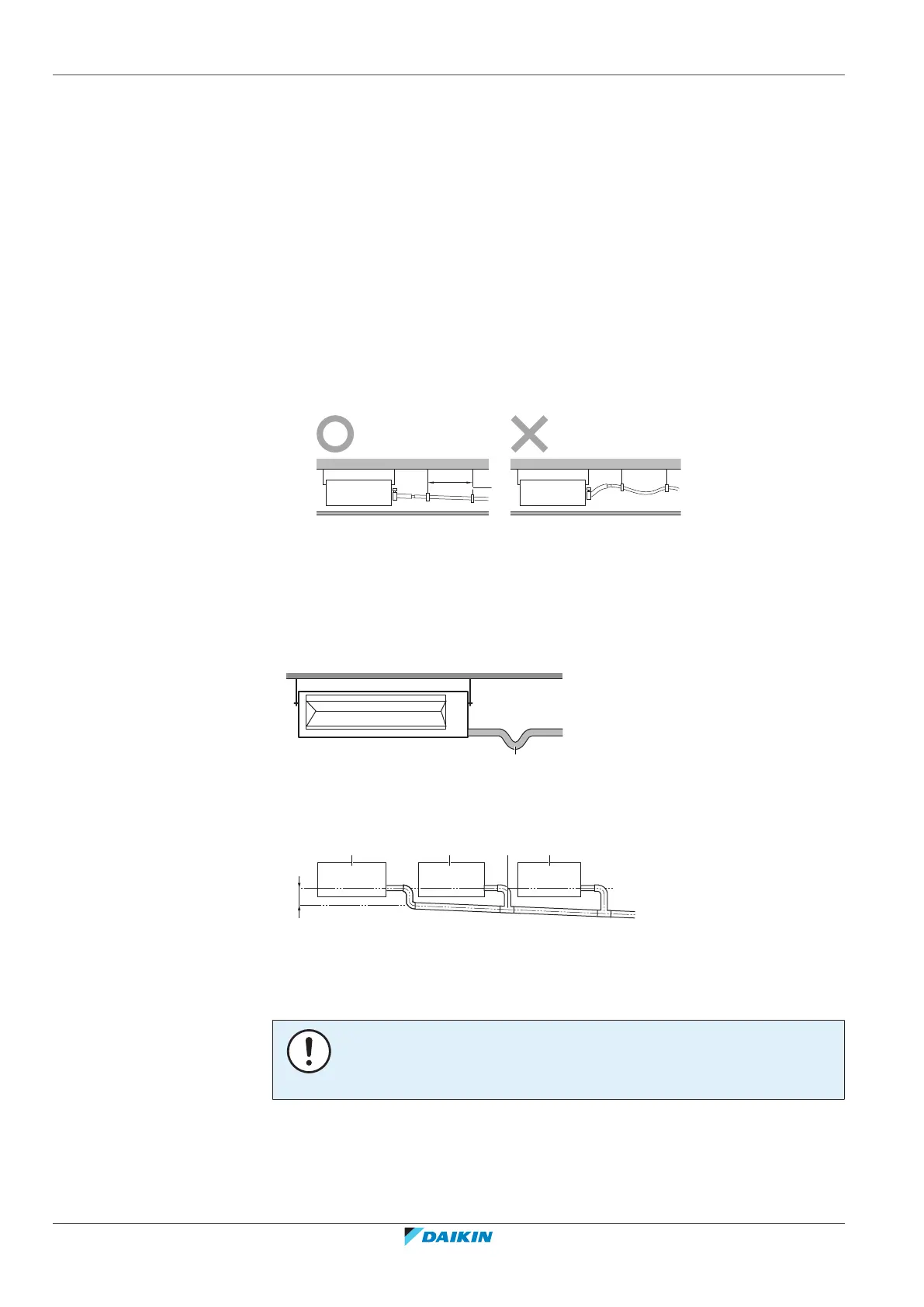16 | Unit installation
Installer and user reference guide
70
RKXYQ5T8+8T7Y1B + RDXYQ5T8+8T7V1B
VRV IV heat pump for indoor installation
4P499898-1A – 2020.10
16.4.4 Guidelines when installing the drain piping
Make sure condensation water can be evacuated properly. This involves:
▪ General guidelines
▪ Connecting the drain piping to the heat exchanger unit
▪ Installing a drain pump and drain reservoir
▪ Checking for water leaks
General guidelines
▪ Pipe length. Keep drain piping as short as possible.
▪ Pipe size. Keep the pipe size equal to or greater than that of the connecting pipe
(vinyl pipe of 25mm nominal diameter and 32mm outer diameter).
▪ Slope. Make sure the drain piping slopes down (at least 1/100) to prevent air
from being trapped in the piping. Use hanging bars as shown.
a Hanging bar
O Allowed
X Not allowed
▪ Condensation. Take measures against condensation. Insulate the complete drain
piping in the building.
▪ Bad odours. To prevent bad odours and air going into the unit through the drain
piping, install a trap.
a Trap
▪ Combining drain pipes. You can combine drain pipes. Make sure to use drain
pipes and T-joints with a correct gauge for the operating capacity of the units.
a Heat exchanger unit
b Indoor unit
c T-joint
To connect the drain piping to the heat exchanger unit
NOTICE
Incorrect connection of the drain hose might cause leaks, and damage the
installation space and surroundings.
1 Push the drain hose as far as possible over the drain pipe connection.
2 Tighten the metal clamp until the screw head is less than 4 mm from the
metal clamp part.

